A Comprehensive Guide to the Dizzying World of Electric Guitar Pickups
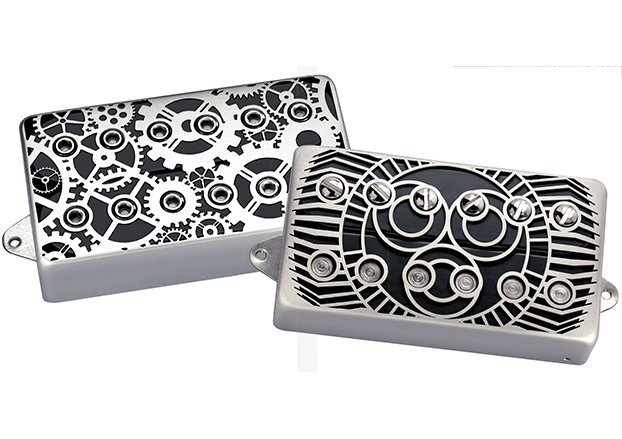
It’s a no-brainer that the two most important elements of an electric guitar rig are the guitar and amp. But what is the third most important element?
The pickups. Why? Because they are the critical, essential link between the guitar and amp, transmitting the guitar’s signal to the amp while also acting as sort of a gatekeeper by boosting and/or cutting certain frequencies coming from the guitar.
While a guitar’s tone woods and construction account for much of its overall tonal characteristics, the pickups are the source of a guitar’s primary tone, shaping its personality by sculpting the guitar’s inherent acoustic tone into something that’s (hopefully) more refined, sonically attractive, articulate and dynamically responsive before it reaches the amp and speakers for further tone shaping.
One of the easiest, fastest and sometimes even cheapest ways to significantly improve a guitar’s tone is by upgrading its pickups. Simply put, a poor set of pickups can make a great guitar sound lousy, but a great set of pickups can make a cheap guitar actually sound pretty good.
Don’t believe it? Consider the example of many low-budget Teisco and Harmony/Silvertone guitars from the Sixties built out of cheesy plywood and inferior mystery materials but equipped with “gold foil” pickups, which on their own fetch almost as much on the used market as the entire guitar they were installed into because those pickups make pretty much any guitar sound divine.
While changing pickups can provide a guitar with a significant tonal makeover, a good set of pickups basically enhances what is already there instead of completely transforming a guitar into something else. One way to think of the process is like swapping engines in a car.
For example, one could install a Corvette 327 engine in a 1940 Ford Tudor sedan (and lots of hot rodding enthusiasts have done so), but while the swap will increase the Ford’s top speed and improve performance, the new engine won’t turn the Ford into a Corvette.
Get The Pick Newsletter
All the latest guitar news, interviews, lessons, reviews, deals and more, direct to your inbox!
Similarly, one can’t turn a Strat into a Les Paul just by installing full-size humbuckers; there’s much more that influences a guitar’s tone, such as body and neck woods, scale length, neck and headstock angles, bridge construction and so on—but a pickup swap will certainly change the guitar’s performance and personality.
Illustration Courtesy of Fender
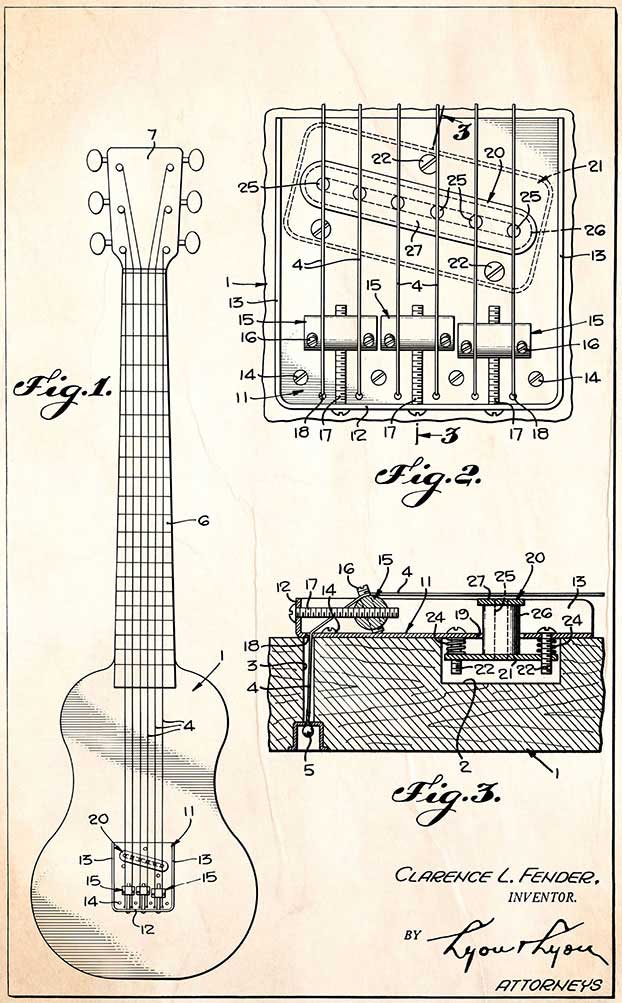
Probably the most difficult part of the pickup-swapping process is deciding which pickups to choose in the first place. Back in the Seventies when replacement pickups first hit the market in significant numbers, the choices were basically split between vintage-style or high-output models made by a handful of pickup specialists.
Today there are hundreds of choices, which include low-cost “generic” models, numerous variations of vintage classics, super high-output versions, an ever-growing selection of artist signature models, accurate reproductions of obscure cult pickups, revolutionary modern designs and much more, offered by a growing variety of guitar companies, pickup specialists and small boutique makers. Then there are various specs that confuse neophytes and old farts alike and can be as difficult to decode as a Japanese book from a native English speaker’s perspective.
The good thing is that if you have a particular, reasonable tone goal in mind, there’s a very strong likelihood that there’s a pickup out there that will deliver the goods. Of course, you don’t want to go through a dozen or so pickups before you find the right one, which is why we’re here to help you navigate through the vast and often confusing world of today’s replacement pickup market. From the terms and technologies behind pickup design to the tools you need to install pickups yourself, the following information is essential knowledge that should put you on a faster track to tonal nirvana.
WHAT IS A PICKUP?
For this article we’ll be focusing exclusively on standard magnetic electric guitar pickups and not on other varieties such as piezo or other contact transducers, microphone-based pickups or optical technology.
The modern electric guitar pickup that we all know and love was initially conceived in the early Thirties by George Beauchamp for the first commercially successful electric guitar—the Ro-Pat-In/Rickenbacker A-25/A-22 “Frying Pan” lap steel. Whereas previous electric guitar pickup designs focused on capturing the vibrations of a guitar’s top or body, Beauchamp’s design focused on the vibrating strings instead. His design incorporated two large horseshoe-shaped magnets that surrounded the strings near the bridge and a wire coil wrapped around a bobbin that surrounded individual magnetic pole pieces for each string.
A standard electric guitar pickup creates a magnetic flux field, which in turn magnetizes a string made of ferromagnetic material like steel or nickel. When the string is plucked, the vibrations of the magnetically charged string disturb the flux field. As the magnetic field fluctuates, the disturbances are transmitted through the wire coil as electrical current.
The overall design of a magnetic electric guitar pickup is very simple, but numerous variables such as the type and strength of the magnet(s), size of the coil(s), size of the wire, wire material, wire insulation, number of windings, winding pattern, pole piece design and so on affect a pickup’s performance, output and tonal characteristics. While it’s important to be aware of these variables and how they can affect sound, don’t worry too much about the finer details unless you plan on designing your own pickups.
PICKUP TYPES
In the grand scheme of things, there are only two basic types of electric guitar pickups: single-coil and humbucking. A single-coil pickup generally consists of a coil of wire wrapped around a bobbin surrounding either individual pole pieces for each string or a single, continuous blade that extends across all of the strings. A humbucking pickup involves two wire coils placed either side by side or in a top and bottom stack configuration, also with the coils surrounding the pole pieces or blade(s).
Usually a humbucking pickup has a single flat, bar-shaped magnet placed below a side-by-side configuration of coils and centered lengthwise between each coil and its set of polepieces, which are made of ferrous material such as steel to conduct magnetism from the bar magnet and generate the magnetic field.
On a single-coil pickup and some stacked humbuckers, the pole pieces are usually made of permanently magnetized material, although many exceptions exist, like the P-90 pickup design, which features two bar magnets underneath the coil with ferrous pole piece screws placed in between the magnets.
Lollar Pickups' Traditional
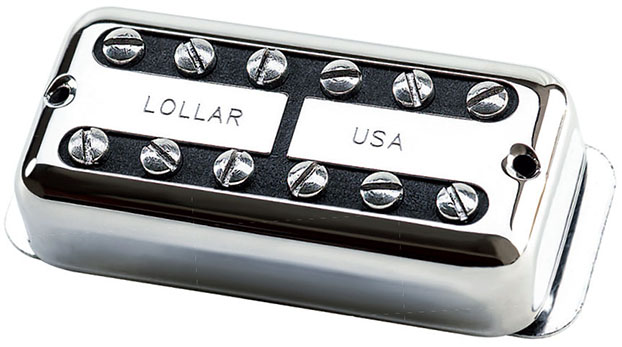
In general terms, single-coil pickups tend to be smaller in size, have lower output and produce brighter tones with emphasized treble, but they also tend to pick up unwanted interference like 60-cycle hum. Humbucking pickups are generally larger, deliver higher output levels and offer warmer tones with pronounced midrange, while also eliminating most extraneous noise due to the noise-canceling properties resulting from using two coils with reversed polarity and the current flowing in opposing directions.
However, over time these distinctions have become blurred, and it’s now common to find humbucking pickups in smaller, Strat- and Tele-sized configurations, single-coil pickups with noise-canceling technology and many other variations.
SINGLE-COIL PICKUP TYPES
By far the most popular and common single-coil pickup types are Strat- and Tele-style pickups. However, there are a multitude of other varieties worth consideration that each offer their own distinct tonal personalities and performance characteristics. The Gibson P-90 (in soapbar and dog-ear housings) is a very popular choice, but Gibson’s similar and earlier design known as the “Charlie Christian” pickup featuring a single blade pole piece is also a cool alternative with cult appeal, especially among jazz, country and blues players.
The Fender Jazzmaster and Franz pickups (the latter commonly found in Guild electrics from the Fifties) look similar to P-90 pickups, but each has its own distinct voice, as do Fender Jaguar pickups, which have similar dimensions to Strat pickups but are surrounded by metal claws to focus a parallel magnetic field along each string.
A set of Fender Custom Shop Texas Special Strat pickups
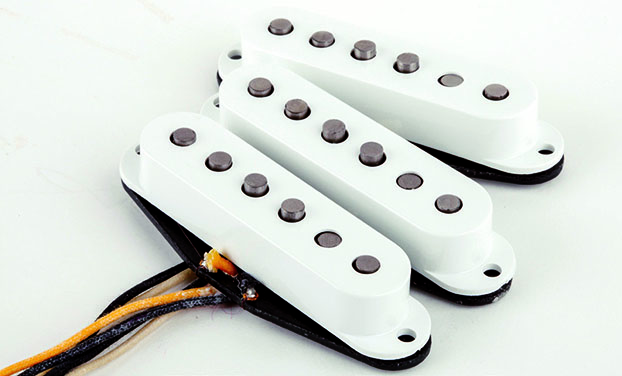
Other interesting classic, original single-coil pickup designs include the “lipstick tube” pickups found on many Danelectro and Silvertone guitars, Gretsch Hilo’Tron pickups, DeArmond/Dynasonic pickups commonly used by Gretsch, Burns Tri-Sonic (a key component of Brian May’s tone), Rickenbacker “toaster top” and variations of the Sixties “gold foil” design found in Teisco and Harmony guitars.
HUMBUCKING PICKUP TYPES
Seth lover’s original humbucking pickup design, introduced on Gibson guitars in 1957 and nicknamed the “PAF” for the “patent applied for” decal affixed to the base plate through the early Sixties, remains the basic template for the majority of humbucking pickup designs produced today. However, there are several other popular classic variations, including Gibson’s smaller mini-humbucker and Firebird pickups, the Gretsch Filter’Tron and Fender Wide-Range (also designed by Seth Lover).
PASSIVE VS. ACTIVE
The most common distinction after single-coil/ humbucking is whether a pickup is passive or active. Passive pickups are the traditional wire coil/magnet/pole piece design, and they remain the most popular style of pickup on the market today. Passive pickups have a high-impedance design (low current, potentially high voltage), and output is usually increased by wrapping the bobbins with additional turns of wire and/or using more powerful magnets.
However, increasing the output of a passive pickup also can affect the tone in undesirable ways such as making the treble response too dark or shrill, and the pickups can become more susceptible to undesirable external noise. If the magnets are too powerful, a strong magnetic field can actually suppress string vibration, decreasing sustain and dynamic response—the reverse of the desired outcome.
Active pickups have similar basic construction to passive pickups, but the circuitry uses an active preamp (usually powered by a 9-volt battery) to boost the signal, allowing low-impedance designs (high current, potentially low voltage) incorporating fewer wraps of coil wire and less powerful magnets.
There are several benefits to this type of design: reduced noise (particularly with single-coil designs), higher overall output, consistent tone when turning down the volume control, no high-frequency loss when using long cables, consistent clarity and note-to-note definition whether using clean or high-gain distortion amp settings, and the ability to use active tone controls to boost or cut frequencies (whereas passive tone controls are really just low-pass filters that can only roll off treble frequencies to make the tone darker). The downside of active pickups is that the tone can cover a wider and flatter frequency range than many players are accustomed to, which some players find too cold or sterile, and the output is generally more consistent, which some players consider less dynamically responsive.
As always (at least when it comes to pickups), there are plenty of exceptions to these general descriptions. Some new active pickup models are designed to provide warm tones similar to vintage passive pickups, and some modern passive pickup designs have expanded treble and bass to provide a wider frequency range without sacrificing dynamic response.
OUTPUT
Now that we’ve discussed most of the popular different types of electric guitar pickups, let’s get into the basic details of pickup construction and specs that guitarists should know. In discussions, reviews, recommendations and sales literature for pickups, the topic of output seems to dominate. Pickups are often categorized as low-, medium- or high-output, and the term “vintage output” gets thrown around a lot, usually for low- or sometimes medium-output pickups.
This all seems relatively self-explanatory, but confusion often arises when getting into specific ways of measuring output, particularly since the biggest pickup companies use different means for listing these specs. Seymour Duncan uses DC resistance, which is measured in ohms, while DiMarzio measures output in millivolts. Some companies prefer to specify inductance (measured in henries) or even a combination of two to all three of the previous.
DC resistance is the easiest spec to measure as it involves little more than using a multimeter set to measure 20k ohms (. ) and connecting the meter’s red probe to the pickup’s hot wire (usually white or red) and the meter’s black probe to ground (either the base plate, braided shielding or ground wire, which is usually black). Actually it doesn’t really matter if you swap the multimeter’s red and black probes as the reading will be the same, but I think it’s good to maintain a consistent approach as a matter of habit.
General DC resistance ranges for Strat and Tele pickups are typically between 6k and 8k ohms, while some lipstick tube single coils have DC resistance around 3-4k ohms and vintage PAF-style humbuckers measure between 8–10k ohms. Modern high-output pickups often measure at least 12k ohms to values above 20k. But while DC resistance provides a good “ballpark” estimate of a pickup’s output, it doesn’t tell the whole story as resistance is influenced by several factors like the total amount of windings, the gauge of the coil wire and magnet strength. One effective description I’ve read compares DC resistance output specs to determining a person’s size only by measuring their height. That may give you a general impression of their size, but is a 120-pound person who is six feet tall really bigger than a 250-pound person who is only five feet tall?
So why don’t most other companies use millivolts like DiMarzio does? The problem there lies with the numerous variables involved in measuring output this way. Essentially, one needs a very controlled environment where, at the very least, the same type of string at the same tension placed the same distance from the pickup is playing the same note struck at the same strength, and so on. Millivolt specs are good for comparing different models offered by the same company, but comparing pickups between different companies is not useful as the standards are not consistent. Like DC resistance, output millivolts are really only helpful for a ballpark estimate.
I could confuse you even further by discussing inductance (which is measured in henries), but since so few companies list this spec, I’ll just skip it for this article. Long story short: don’t worry too much about pickup output descriptions and specs. Depending on the tone you desire, a low-output pickup can be as good of a choice as a high-output pickup. High-output pickups became popular in the Seventies as a quick and dirty means to push an amp into more saturated distortion, but now that most amps have high-gain preamps and any number of overdrive and distortion devices are readily available, the distinction has become less important.
EQ
This Spec is much more helpful in the grand scheme of things than output. Do you want a warmer sound from your guitar? Then you’ll probably want to consider a pickup that emphasizes midrange and bass. How about more clarity, presence and cut? A pickup with boosted treble frequenices may be an ideal choice. Most manufacturers’ EQ descriptions are pretty accurate and many of their websites include recorded examples that provide excellent reference standards, but keep in mind that the new pickups installed in your personal guitar may not match the tone of the guitar in a soundbite due to different tone woods, scale lengths and other construction details, as well as the variations that exist even in two different guitars of the same model.
As a rule of thumb, I find it’s best to try to achieve some sort of balance between the guitar and pickup’s tonal character. If you think that your guitar with its current pickup configuration sounds too dark, look for brighter-sounding pickups and perhaps even consider low- or medium-output models. If it’s too trebly, weak and thin-sounding, go for high-output pickups with boosted midrange and bass.
MAGNETS
While several details of a pickup’s construction affect its tonal character and output, the type of magnet(s) that it uses can tell you a lot about its character right off the bat. The most common types of magnets used for pickup construction are alnico and ceramic. Alnico is short for aluminum, nickel and cobalt, and alnico magnets are usually an alloy of iron, aluminum, nickel, cobalt and copper, and sometimes titanium as well.
Alnico magnets can be made in a variety of different compositions with each element in different percentages, which are graded as alnico 1, 2, 3, 4, 5 and so on (an alnico 3 magnet actually has no cobalt, while alnico 8 and above magnets have a small percentage of titanium). With the exception of alnico 3, a higher number corresponds with a stronger magnet. The most common magnets for guitar pickups are alnico 2 and 5. Ceramic magnets are made from barium, strontium and lead-iron oxides, which results in a stronger magnet that also is cheaper to produce.
While a pickup’s overall tonal character is influenced by many different factors, in general terms, weaker magnets like alnico 2 tend to emphasize midrange while stronger magnets like alnico 5 have more of a “scooped mid” personality with extended bass and treble response. Ceramic magnets usually produce brilliant treble and crisp, articulate attack.
Other magnets used less often for pickup construction include samarium cobalt (featured in Fender’s discontinued Samarium Cobalt Noiseless pickups) and neodymium (featured in Q-Tuner pickups). Both are “rare earth” magnets that are generally stronger than alnico and ceramic magnets but also more expensive to produce due to the higher cost of the raw materials. Another uncommon magnet is rubber ferrite (similar to the magnets most of us use to affix our kids’ artwork to the refrigerator), which is used in most “gold foil” pickup designs.
WINDINGS
Most pick up manufacturers will not reveal the specifics of how their various pickup models are wound because this is where the true art of pickup design comes into play. Dozens of variables are involved here including the gauge/thickness of the copper wire used, the thickness of the wire insulation (which affects how close the metal of the wound wires are to each other), how tight or loose the coils are wound, how many total windings are used, the pattern of the windings, the width and depth of the windings and much more. However, you don’t need to be concerned about these details unless you plan on winding your own pickups one day. Again, a pickup maker’s EQ charts are more helpful in the long run.
Seymour Duncan Dave Mustane pickups
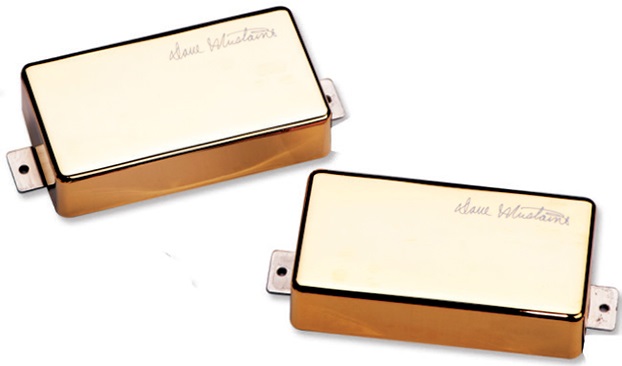
One detail to consider, however, is whether a pickup is potted (the windings coated in wax, epoxy or other material) or not. Coil windings, particularly if the wind is loose, can vibrate against each other when a guitar is played at loud volumes, which can result in a piercing, nasty feedback squeal.
However, at lower volumes loose windings can produce “microphonic” tones that, simply put, deliver a natural, acoustic-like sound similar to using a microphone. Light potting is an ideal compromise, providing some acoustic-like resonance while resisting squeal. Heavy potting is best for guitarists who play at excessively loud volume levels, but some players think the overall tone of heavily potted pickups is too tight and focused.
Fishman Fluence Humbuckers for seven- and eight-string guitars

Then there is the entirely new design of the Fishman Fluence pickups, which replaces copper wire coils with an innovation called the Fluence Core, consisting of two multi-interconnected- layer boards. This design provides two entirely different tones (such as active/passive) at the flick of a switch. Another relatively new innovation is Lace’s Alumitone pickups, which feature “current driven” passive technology that enables a design with minimal coil windings and low DC resistance to produce increased output levels with the expanded frequency response and low noise of active designs.
COVERS
Pickup covers protect the fragile wire coils from damage, but depending upon the material they’re made out of, they also can affect the pickup’s magnetic field and resonant peak. A cover that is made of ferrous material and/or plated with ferrous material (like nickel) will affect the pickup’s magnetic flux, but a plastic pickup cover won’t (which is why Strat players don’t remove the pickup covers).
When Seth Lover designed the original Gibson PAF humbucker, he experimented with a variety of different materials for pickup covers before making his final choice based on how it affected the guitar’s tone (part of the reason later Gibson humbuckers with chrome plating on the covers—instead of nickel—sound different). Removing the covers results in a different magnetic field that boosts output and treble frequencies slightly.
POLE PIECES
The size and shape of the pole pieces are critical features of pickup design that affect the size and shape of the pickup’s magnetic flux field. Generally speaking, wider pole pieces will produce a wider magnetic field that picks up a larger portion of the vibrating string, producing a more sonically complex tone, whereas the narrower focus of a narrower pole piece produces a more focused tone.
A focused magnetic field can be a good thing if you prefer bright, percussive twang, while a wider field generally delivers richer, full-bodied tone. Some single-coil pickups have staggered pole piece heights to compensate for the varying output of different strings, while others have the pole pieces all the same height (like Mitt Romney’s trees in Michigan). Height-adjustable pole pieces with screw or Allen heads allow players to customize the compensation, while blade-style pole pieces are a good choice for guitarists who struggle with decreased signal strength when they bend strings (as bending a string can move it out of a magnetic flux “peak” and into a weaker “valley”).
TWO-CONDUCTOR VS. FOUR-CONDUCTOR HUMBUCKER WIRING
If you’ve already shopped for humbucking pickups, you may have noticed options for two- and four-conductor wiring. Two-conductor wiring means the pickup has only separate wires for the hot output and ground. Four-conductor wiring provides two separate wires for each of the pickup’s coils, identified as north start, north finish, south start and south finish, with north and south referring to the polarity of the separate coils.
Four-conductor wiring offers a multitude of output circuit configurations, including coil split/tapping (for single-coil tones), series, parallel and out-of-phase. The advantages of different wiring configurations are worthy of an entire article unto itself, but my quick recommendation is to choose four-conductor wiring if available as it can be wired like a two-conductor pickup but it also offers other options should you choose to explore those later.
MAKING THE FINAL CHOICE
The number of companies making replacement pickups today is truly staggering and impressive. Most of the major guitar companies like Dean, EVH, Fender, Gibson, Gretsch, PRS and more sell pickups individually, and the big specialists like DiMarzio and Seymour Duncan offer an incredible variety of choices as well as designs beyond traditional Gibson-style humbuckers and Strat/Tele single-coils.
Even most smaller boutique companies like Barden, Bare Knuckle, Curtis Novak, Kent Armstrong, Bill Lawrence, Lindy Fralin, Lollar, Mojotone, RailHammer, Rio Grande, Suhr, TV Jones, Van Zandt and Wilkinson offer an impressive variety of models to choose from, as do bigger parts-oriented companies like Allparts and WD. Active pickup specialists include Bartolini, Bill Lawrence, Duncan and EMG, while modern, revolutionary designs are available from Fishman, Lace and Q-Tuner.
Bare Knuckle Cobra pickup
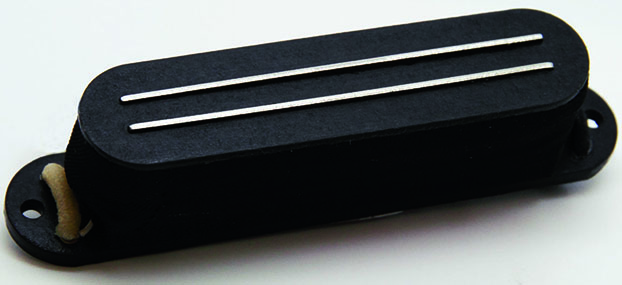
Just like guitar models, an abundance of signature model pickups is available, and these pickups are a good place to start if your goal is to sound similar to your favorite guitar hero. Even if your favorite players don’t have signature models, it can be worth the effort to find out what pickups they play as that can eliminate some of the guesswork about a pickup’s overall tonal personality. If you choose to go on your own path, don’t be afraid to experiment and make a few changes as you go along.
Pickups are a relatively inexpensive investment and as long as the pickups you are swapping are the same size as the ones already in your guitar the modification is easily reversible.
Choosing the right pickups for your guitar often can be better than getting an entirely new guitar, especially if you’re already comfortable with the playability of your ax. If you’ve struggled with less than stellar tone for years, and no new amp or pedal has been able to fix it, changing pickups is the best solution, and more often than not the results exceed a player’s expectations. So get out there and melt some solder, burn some fingertips and find the tone you’ve always dreamed of.
TOOL TIME: ESSENTIAL ITEMS FOR DIY PICKUP REPLACEMENT
I don’t mean to put your local guitar repair tech out of work, but the skills required for replacing pickups are so simple that there is no reason you shouldn’t consider doing this job yourself. For the labor cost of one pickup replacement job, you could buy all the tools you’ll ever need to replace pickups for a lifetime, and for a few bucks more you can do the job with ease and speed.
The most important tool for pickup installation is a good soldering iron or station. The main consideration here is that the iron has ample power to melt solder quickly both on potentiometer lugs and bigger surfaces like the back of a pot, tremolo claw or other surfaces used for grounding. A 40-watt soldering iron is sufficient for most jobs (and inexpensive), but even better is an iron or soldering station with variable power or temperature.
The Weller WES51 is an inexpensive 50-watt soldering station that is variable from 350 to 850 degrees F and costs less than $100. Higher wattage produces higher temperatures that can quickly heat up braided shielding and the back of a potentiometer enough to ensure a solid solder joint without damaging the pot’s internal resistive strip. Another reason to use a high-power soldering iron or station is that many new guitars use lead-free solder, which can only be removed at temperatures higher than 425 degrees.
You’ll also need two tips for the iron—a pencil-style tip with a sharp point for precision work at lower wattage (such as soldering a wire to a pot lug) and a chisel tip with a wide, flat edge to distribute heat quickly across larger surfaces (such as the back of a pot). If you opt for just a soldering iron, you’ll also need a stand (soldering stations usually have built-in stands).
Other essential items include 60/40 (tin/lead) solder with rosin-core flux (do NOT use acid-core flux) or lead-free rosin-core solder (only if your soldering iron is powerful enough) and a good set of wire cutter/strippers that can remove insulation on wire between 10 to 20AWG. Solder wick or a solder sucker is helpful for removing old solder (and keeping it from damaging your guitar’s finish). A curved-jaw locking hemostat or a device called a “third hand” can be very helpful for holding wire and components securely while freeing your hands for the soldering iron and solder.
Chris is the co-author of Eruption - Conversations with Eddie Van Halen. He is a 40-year music industry veteran who started at Boardwalk Entertainment (Joan Jett, Night Ranger) and Roland US before becoming a guitar journalist in 1991. He has interviewed more than 600 artists, written more than 1,400 product reviews and contributed to Jeff Beck’s Beck 01: Hot Rods and Rock & Roll and Eric Clapton’s Six String Stories.
“Classic aesthetics with cutting-edge technology”: Are Seymour Duncan's new Jazzmaster Silencers the ultimate Jazzmaster pickups?
“We’re all looking for new inspiration. Some of us have been playing humbuckers for a long, long time”: Are we witnessing a P-90 renaissance? Warren Haynes has his say











